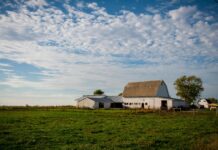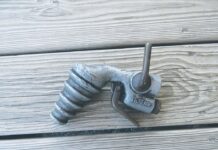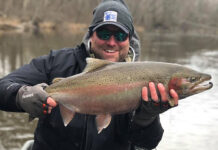It’s one of the problems that happens around here … a blister. Understanding how they develop and how to treat them can prolong the workday and relieve some of the pain.
There are several layers of skin and when you apply friction, eventually the layers can start to separate. At first, it begins as a hot spot, the precursor to a blister. Next, the area fills with liquid to protect the wound.
Most people advise against popping a blister, but while I was running and training for marathons and ultramarathons, I came across a book the runners swear by. It’s called “Fixing Your Feet” by John Vonhof.
Runners can’t afford to stop running because of a blister, just as much as farmers can’t quit out in the field because of a blister. If you rip the skin off, it becomes more painful, as the tender skin becomes exposed. Furthermore, it takes longer to heal without the protective layer of skin.
The solution, according to Vonhof, is to drain the blister. I do this by inserting a needle, making two holes that are opposing each other. The skin layer that bubbled up provides protection for the delicate skin layer beneath it and the holes allow fluid to drain.
On the homestead, I would still get them on my hands if I was using a hoe too long or pushing the wheel hoe and I needed a solution. So, I went back to the book to see if I could do something different for my hands.
The other part of the book is about prevention. Going back to how the blister forms, the idea is to reduce the heat, moisture and friction. Runners will wear special socks, perhaps wool to evaporate the moisture while it’s in a gaseous state. But I think wool gloves in the summer to hoe a garden would be slippery. Not to mention that I think it would be uncomfortable.
My arms and hands sweat profusely while pushing a wheel and all the moisture runs down my arms and onto my hands. Creating an abundance of moisture that I constantly have to wipe off.
After countless years of trying different things, including leather gloves, we’ve concluded that the easiest way to prevent blisters working in the garden is to hold onto the tool and squeeze the snot out of it. By holding onto it so hard, we’ve managed to eliminate blister problems altogether.
Now as we’re teaching the younger kids how to hold a hoe, we provide this as part of our instruction. If you’re not holding on tight enough, it will slide in your hand, and you’ll end up with blisters all over. We tend to wear gloves if we’re using something metal, like a post pounder, as it is difficult to keep hands dry enough to stop it from sliding.
After squeezing the daylights out of a wooden-handled tool all day, weeding the garden, you also get a great workout. Maybe I can sell some gym memberships to my garden!













